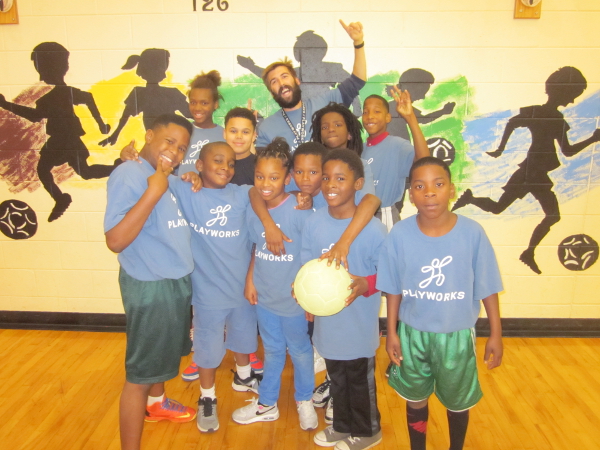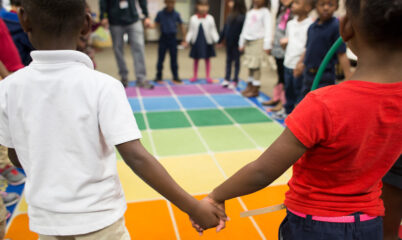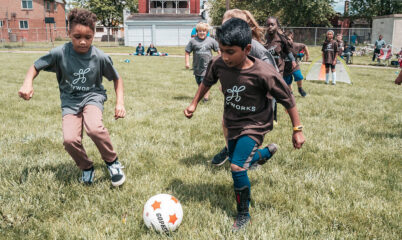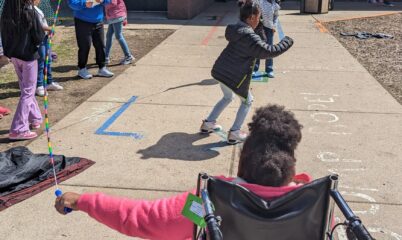The kids of Hopkins Lloyd Community School have a competitive edge. For many of the students, this trait is necessary in homes of many siblings, and to focus beyond peer pressure at school. On the Playworks co-ed soccer Team at Hopkins Lloyd, the players brought that competitive nature to practices and games.
As a Playworks Coach, I selected a team of boys and girls who may not have naturally formed a team together. At the first practice, I overheard remarks such as,
“She’s on the team?”
“He can’t play soccer!”
“We’re never going to win.”
My goal for our soccer team was to foster a sense of inclusion and togetherness, and channel the energy of this group of kids towards a common, positive goal. We were going to be a team. During practices we’d play games emphasizing teamwork and skills development, working on such skills as passing, trapping, and defensive play. We would gather in circles to calm down, contemplate, and share our answers to questions such as, “What would you say to someone who just missed a game-winning goal?” or, “Tell me a way that you can make a friend on another team,” or simply, “What does it mean to give a high-five?”
During games, I’d turn my players’ naturally developed competitive edge inwards, developing goals to accomplish as a team, focusing on things we’d worked on and discussed in practice. “How many passes will we make during this game?” I’d ask, and allow the students to agree on a number. Allowing a guided development of a team goal gave the players ownership, as well as just giving them to talk and work together off the field.
Through the game I’d tally each pass, defensive stop, or whatever goal we had decided on, and check in with the players after each quarter to let them know how we were doing. At halftime, they had a chance to quickly brainstorm and share ways to reach our goal. The team goals excited them, and allowed them new opportunities to work together.
During one game in which our team had been experiencing slightly more success than the other team, I saw the competitive fire begin to burn in my players, taking a negative hold, giving them satisfaction in a way I didn’t find entirely healthy. Quickly, I introduced a new challenge: I wanted to see ten high-fives exchanged with players of the other team. Before the second half began, many of my players were already on the other half of the field and near the other team’s bench, exchanging high-fives and words of encouragement.
Sportspersonship was blossoming in practices, games, and even during the schoolday, growing through the competition. In our team’s final match, during our pre-game huddle, I announced what our goal was for the game: to exchange 100 high-fives.
“That’s impossible!” L. said.
“No it isn’t!” said A.R.
“We can do it as a team,” K. offered emphatically, “We have to work together!”
Without my intervention, with only introducing the concept of exchanging 100 high-fives, the team became a team, and showed their skill as true ambassadors of positivity. When our team scored a goal, it was followed almost immediately by a delivery of fresh high-fives to the other team. One player even tapped a student on the shoulder to get him to turn around, pick his head up, and get a high-five and a “Good job, you can do it this time.” Refs, fans, coaches, players, everyone was getting high-fives left and right. It was the best! We exceeded our goal, and no matter what was put in the back of the net, we were winners.
A competitive edge is essential to my students. They need it to continue to progress. But as stewards of positivity and teamwork, they are now approaching competition in a new light. Power to play!



